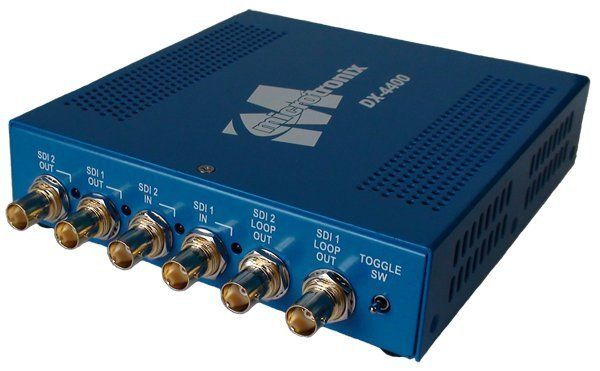Enhancing Visual Experience with Picture Display Technology: A Quick Insight

High-quality real-time video display systems must present user information with minimal latency for sein broadcast, medical imaging, and robotic systems and . Microtronix leads the way in video on-screen display solutions for embedded real-time applications making high-definition video overlay and picture-in-picture technology easier and more efficient to use.
The Evolution of Picture Display Technology
It wasn’t too long ago that CRT monitors were the standard for visual output. Then came LCDs, followed by LEDs, and now, we see the rise of 4K UHD and beyond. The progress goes beyond resolution. Refresh rates, contrast ratios, and color accuracy have all seen big improvements. Picture-in-picture display and text and graphic overlay technology has evolved to support multiple content streams on a single display without loss of quality. These advancements are vital for real-time interactive user applications including security, medical diagnostics, robotics and broadcast stusio systems.
Why Video On-Screen Display Matters?
Real-time user application require the on-screen display of time, GPS data or other operational information. For example, a surgical environment it is necessary to display patient vitals alongside a high-resolution endoscopic feed. Video on-screen display boosts visual info while keeping important content clear. These applications require these low-latency video overlays of text and graphic information for quick decision-making. In industrial automation, engineers can watch many data streams at once. This helps them keep performance and safety at their best. The challenge is to integrate these overlays without delay or distortion. That's where high-performance hardware and software solutions are important.
Picture in Picture Display in Embedded Systems
Embedded systems have transformed how displays function across various sectors. Embedded solutions differ from consumer-grade displays. They need to use less power, handle tough environments, and maintain real-time performance.
Picture-in-picture technology in embedded apps lets you manage many video sources. This means you can show them at the same time, making user interaction smooth and easy. Showing many content layers is a game changer. This applies to military HUDs and commercial automotive entertainment. Companies must make sure that hardware and software work well together. This is key to meeting industry needs.
The Role of Microtronix in Advancing Display Solutions
Microtronix isn’t just any tech company. It’s a full-service firm that develops products and pushes display technology limits. The company specializes in video on-screen display solutions. It provides all the hardware and software services needed for 4K UHD SDI video overlays.
This precision helps embedded systems handle high-definition content with optimal performance. It prevents any slowdown. Microtronix delivers solutions for broadcast production, aerospace visualization, and medical imaging. They ensure these solutions perform well in real-time and maintain high quality. Its skill in FPGA processing and video pipeline integration makes it a trusted name.
Applications of Picture-in-Picture display technology
So where does picture-in-picture display technology make the biggest impact? The list is extensive:
- Broadcasting: News and sports use real-time graphics and overlays. This helps keep viewers informed.
- Medical Imaging: Surgeons and radiologists need clear visuals and real-time patient data.
- Security & Surveillance: Multi-feed security systems enjoy integrated overlays that enhance situational awareness.
- Automotive Displays: Today's dashboards and HUDs use layered video feeds. These feeds help with navigation, safety alerts, and entertainment.
- Aerospace & Defense: Flight simulations and tactical displays depend on high-performance video integration.
These applications gain from real-time video on-screen displays. They make things easier to use and boost efficiency.
Overcoming Challenges in High-Performance Video Display
Creating a strong picture-in-picture display system is more than stacking two video feeds. Latency, synchronization, and processing power all play a role in achieving seamless integration. FPGA-based processing and good memory management are key for keeping performance strong.
Another challenge is ensuring compatibility across different display technologies. Optimize integration for maximum efficiency with OLED, LCD, or micro-LED panels. Microtronix tackles these challenges. They create custom solutions that blend hardware power with smart software.
The Future of Video On-Screen Display Technology
Where is the video on-screen display headed next? Look for more progress in AI video processing. Smart overlays will change based on how users interact. Advanced overlay solutions will help augmented reality (AR) and virtual reality (VR) applications. This will create immersive experiences filled with data. As 8K displays grow in popularity, the demand for ultra-high-definition overlays will rise. As technology changes, industries need flexible and efficient solutions. This helps them handle the growing complexity of display systems.
Final Thoughts
Display technology has improved a lot. Still, the demand for real-time, high-quality visuals keeps pushing innovation forward. Picture-in-picture display and video on-screen display solutions are now key in many industries. They allow for smooth data integration and better decision-making.
Microtronix is key in this area. They offer advanced embedded solutions for high-definition overlays. As visual needs increase, smart display systems will be crucial. They will help improve user experiences by using effective methods. The future of display technology is brighter than ever. It will enhance broadcasting, improve medical imaging, and boost security applications.
